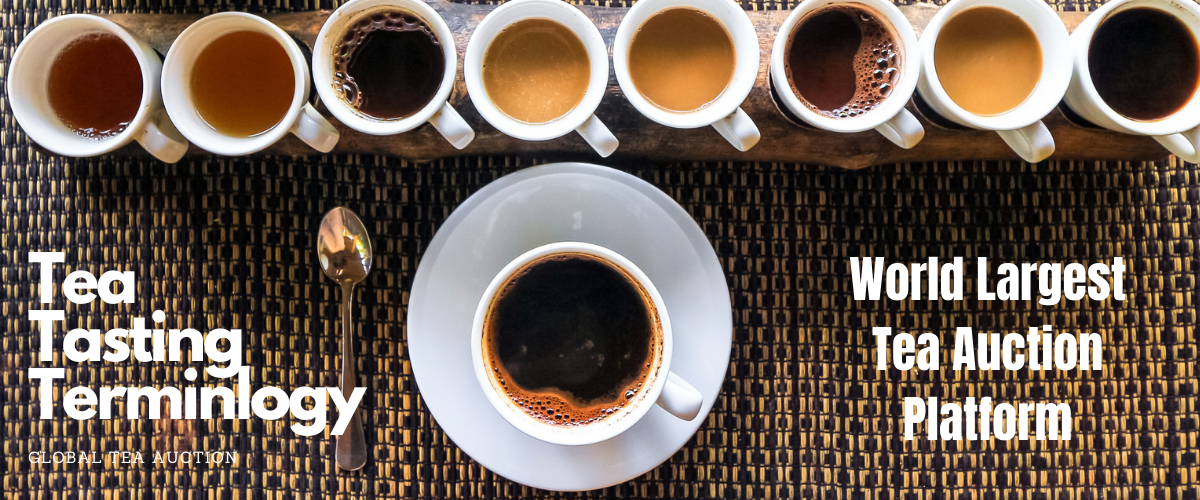The world is full of adventure, mystery, and mystery-inspiring experiences. And for some people, the adventure really starts with the first cup of their tea. They drink a lot of it. But for many others, the adventure continues until the last cup of their cup. As if the tea they drink has a destiny and they have a role in it. And that’s what makes the experience of drinking a cup of tea from all over the world so great.
When auctioning tea you need to know Tea Tasting Terminology or Tasting Formula, because you have to auction your tea online. So you can follow the Tea Tasting Terminology and the Tea Tasting Terminology paragraph will give you the complete direction when bidding for tea. Whether you are a tea buyer in any country – following the Tea Tasting Terminology of a skilled tea tester, you can get the tea you need. Let’s see Tea Tasting Terminology:
Terms Describing Liquors
- Bakey: Over-fired liquor Tea in which too much moisture has been driven off
- Body: Liquor has both fullness and strength, as opposed to being thin
- Bright: Denotes a lively fresh tea with good keeping quality.
- Brisk: the most “live” characteristic. Results from good manufacture
- Burnt: Extreme over-firing
- Character: An attractive taste, specific to the origin, describing teas grown at high altitudes
- Coarse: Describes harsh, undesirable liquor
- Coloury: Indicates useful depth of colour and strength
- Common: A very plain, light, and thin liquor with no distinct flavour
- Cream: A precipitate obtained after cooling
- Dry: Indicates slight over-firing
- Dull: Not clear, and lacking any brightness or briskness
- Earthy: Normally caused by damp storage but also describes a taste that is sometimes “climatically inherent” in teas from certain regions
- Flat: Not fresh (usually due to age)
- Flavour: Most desirable extension of “character,” caused by slow growth at high elevations. Relatively rare
- Fruity: This can be due to over-fermentation and/or bacterial infection before firing. An overripe taste
- Full: a good combination of strength and colour.
- Gone off: A flat or old tea, Often denotes high moisture content
- Green: An immature, “raw” character. Often due to under fermentation (Sometimes under withering)
- Harsh: A taste generally due to under withered leaf, Very rough
- High-Fried: Over-fired but not bakey or burnt
- Lacking: Describes neutral liquor, Nobody, or pronounced characteristics
- Light: Lacking strength and depth of colour
- Malty: A full, bright tea with a taste of malt
- Mushy: A tea that has been packed or stored with a high moisture content
- Mature: not bitter or flat
- Metallic: A sharp Metallic taste
- Musty: Suspicion of mold
- Plain: A liquor that is “clean” but lacking in desirable characteristics.
- Pungent: Astringent with a good combination of briskness, brightness, and strength
- Quality: Refers to “cup quality” and denotes a combination of the most desirable liquoring qualities.
- Raw: A bitter, unpleasant flavor
- Soft: The opposite of briskness, Lacking any “live” characteristic, Caused by inefficient fermentation and/or firing
- Strength: Substance in cup
- Taint: Characteristic or taste that is foreign to tea, such as oil, garlic, etc. Often due to being stored next to other commodities with strong characteristics of their own.
- Thick: Liquor with good colour and strength
- Thin: Insipid light liquor that lacks desirable characteristics
Terms Describing Infused Leaf & Orthodox
- Bright: A black appearance is desirable
- Coppery: Bright leaf that indicates a well-manufactured tea
- Dull: Lacks brightness and usually denotes poor tea. Can be due to faulty manufacture and firing, or high moisture content
- Choppy: Orthodox leaf which has to be cut with a breaker during sorting
- Chesty: A very large broken from Orthodox manufacture
- Crepy: A crimped appearance common with the larger grade broken from orthodox manufactures, such as Broken Orange Pekoe
- Curly: The leaf appearance of whole leaf grade orthodox teas such as Orange Pekoe – as opposed to ‘WIRY’
- Tip: A sign of fine plucking and apparent in the top grades of Orthodox manufacture
Terms Describing Dry Leaf
- Black: A black appearance is desirable
- Blackish: A satisfactory appearance for CTC
- Bloom: A sign of good manufacture and sorting is that the leaves have a bloom or sheen, which has not been removed by overhandling or sorting.
- Bold: Particles of leaf, which are too large for the particular grade
- Brown: A brown appearance in teas that normally indicates overly harsh treatment of the leaf
- Clean: Leaf that is free from fiber, dust, and all extraneous matter
- Even: True to the grade, consisting of pieces of the leaf of fairly even size
- Flaky: Flat, open, and often light in texture
- Gray: Caused by too much abrasion during sorting
- Grainy: describes primary grades of well-made CTC teas such as Pekoe Dust
- Leafy: a tea in which leaves tend to be on the large or long side.
- Light: A tea light in weight, of poor density. Sometimes flaky
- Make: Well-made tea (or not), true to its grade
- Musty: a tea affected by mildew
- Neat: A grade having good “make” and size
- Nose: The smell of the dry leaf. Different teas have different smells according to the type of soil in which they are grown and the altitude and climatic conditions of the region, in which they are grown
- Powdery: Fine light dust.
- Stalk & Fibre: should be minimal in superior grades, but is generally unavoidable in lower-grade teas
- Uneven: “Uneven” pieces of the leaf (mixed) are usually indicative of poor sorting and not true to the particular grade
Taken from “The Book of TEA” – by Anthony Burgess & Global Tea Auction

